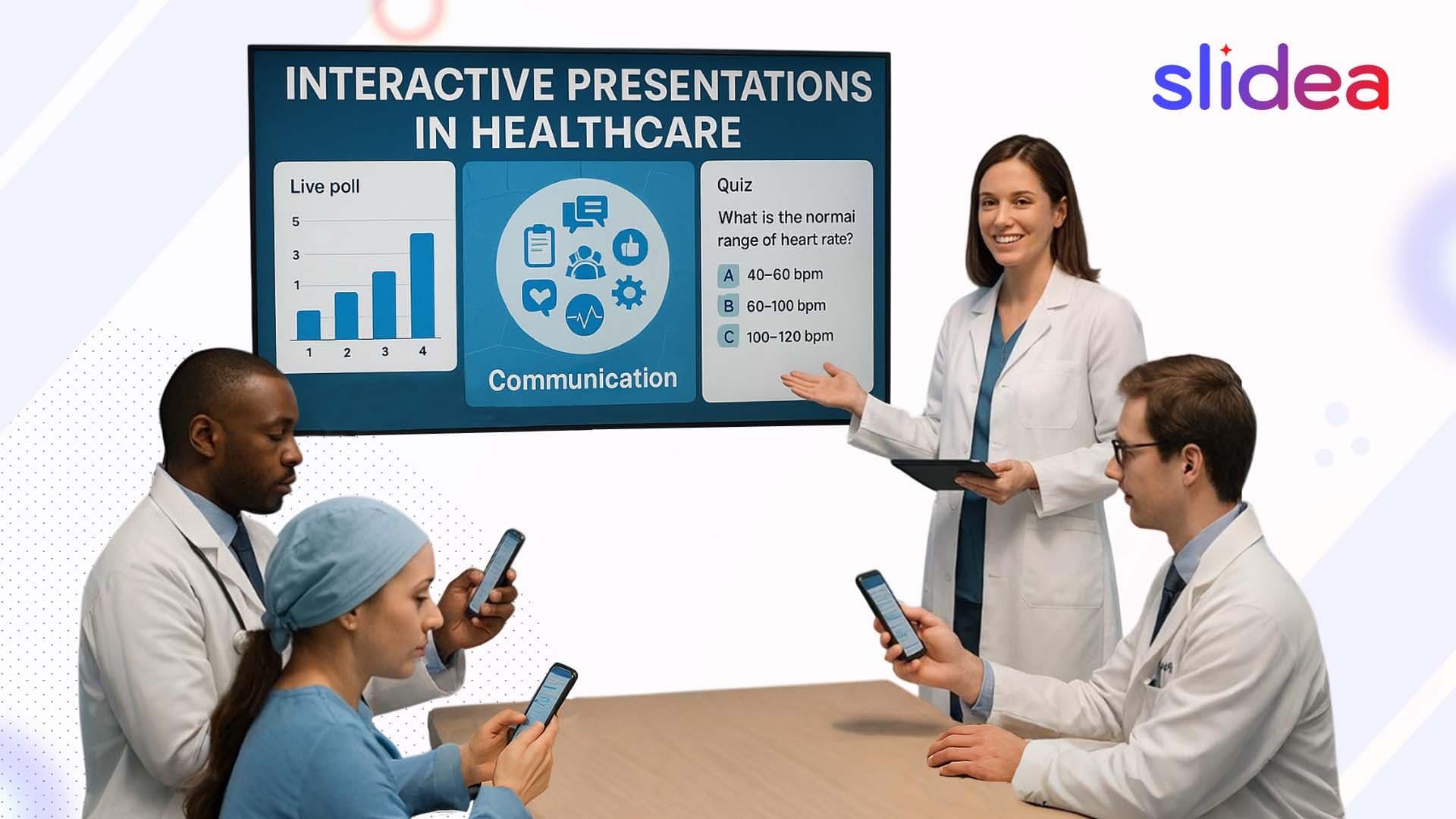Introduction
Every second counts in healthcare. But when it comes to training and team learning, those seconds shouldn’t feel dull or wasted. Traditional lectures and long PowerPoint decks often fail to keep nurses, doctors, and staff engaged. But, there’s a better way — and it’s easier than you think.
Interactive presentations are changing the way healthcare professionals learn, teach, and share ideas. With simple tools like live polls, word clouds, Q&A sessions, and quizzes, medical training becomes more than just a task — it turns into an experience.
Whether it’s a hospital-wide meeting, a nursing workshop, or a small team huddle, using interactive presentation tools can help teams stay focused, learn faster, and remember better.
Let’s break it down in a simple way — so everyone, even someone not in healthcare, can see how powerful these tools really are.
1. Keep the Team Engaged from Start to End
Many healthcare workers attend training after long shifts. Static slides make it hard to focus. With interactive presentations, you can add quizzes, clickable options, and even games. This keeps everyone awake and interested.
Tip: Use icebreaker polls like “What’s one thing you wish patients knew?” at the start of training.
2. Make Complex Info Easier to Understand
Medical topics can be heavy — but when you break them into small parts with polls or Q&A, they become easier to follow. Instead of just saying facts, ask questions, show live answers, and use real-life examples.
Example: Teaching about new emergency protocols? Add a quick quiz or scenario question using your interactive tool.
3. Encourage Two-Way Communication
Doctors, nurses, and technicians often have valuable ideas — but may not always speak up. Interactive tools give them a voice. Use word clouds or anonymous Q&A to gather thoughts without pressure.
Result: Everyone feels heard, and training becomes a two-way street.
4. Improve Learning with Instant Feedback
With real-time polls and quizzes, trainers can check if the audience understands the topic. If most people get a question wrong, the trainer knows to explain it better — right then and there.
5. Save Time with Better Planning
Interactive presentation software lets you plan better. You can prepare your questions, slides, and activities in one place. Some tools even give you reports after the session, which helps track who participated and how they performed.
6. Use It Anywhere — Online or In-Person
Whether your team is in a training room or on a Zoom call, interactive presentation tools work in both settings. This is great for big hospitals, remote clinics, or even traveling health workers.
FAQs
Q1: Can doctors and nurses really find time to use interactive tools?
Yes! Most tools are quick to set up and save time by keeping the session more focused.
Q2: What if my team doesn’t like new tech?
Start small. Try one simple poll or a Q&A box. Once they see the benefit, they’ll be more open.
Q3: Is it safe to use interactive software in hospitals?
Yes, many tools follow privacy rules and don’t collect personal data unless you choose to.
Final Thoughts
Healthcare training doesn’t have to be boring or hard to follow. With interactive presentations, teams can learn faster, speak up more, and remember better. Whether you’re teaching new safety rules, explaining updated care procedures, or sharing research, these tools make learning smooth and stress-free.
Even small changes — like adding a poll or a quiz — can make a big difference. So next time you plan a session, try using an interactive presentation tool. It’s simple, smart, and brings real value to your team.
Learning in healthcare should feel active, not passive. When everyone gets involved, the whole team grows stronger — and that means better care for everyone.




Leave a Comment
Your email address will not be published. Required fields are marked *